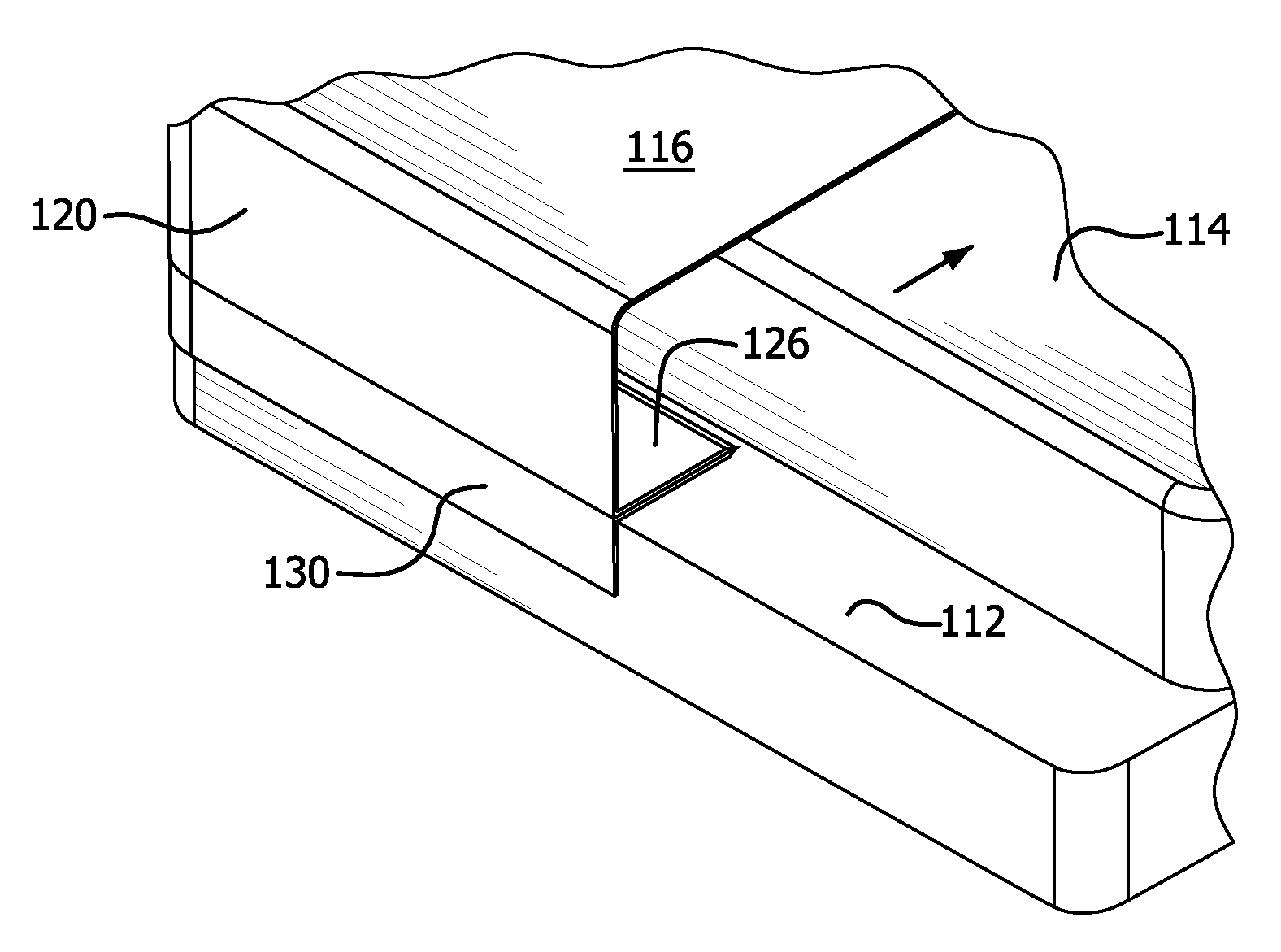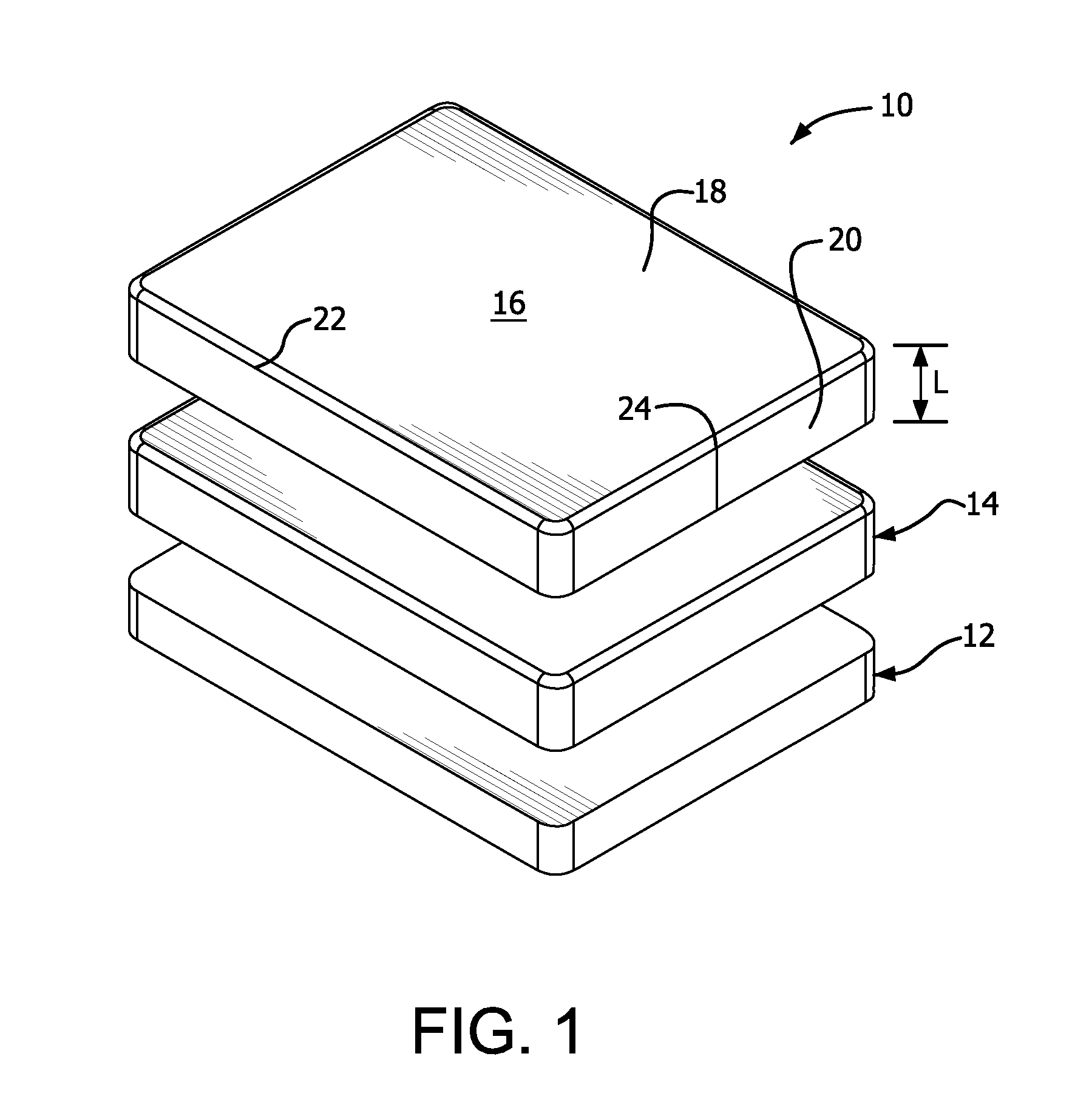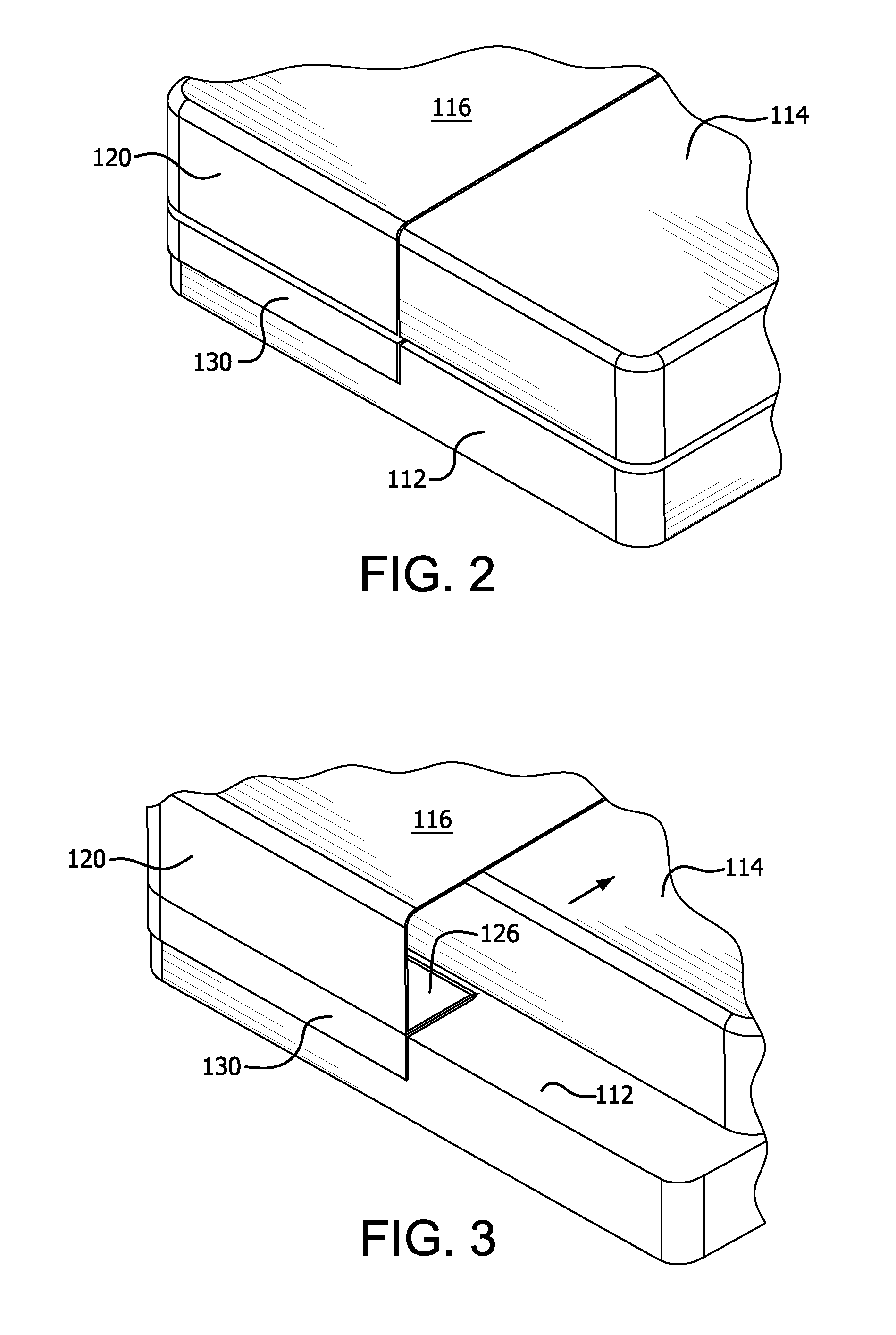Bed bug protection device
a technology for protecting devices and bed bugs, which is applied to beds, bed linen, bed covers, etc., can solve the problems of bed bugs fleeing successfully, difficult to completely kill or remove all bed bugs infesting a room, and existing chemical control methods such as fumigation and the like cannot keep pace, so as to achieve easy installation and removal, low friction
- Summary
- Abstract
- Description
- Claims
- Application Information
AI Technical Summary
Benefits of technology
Problems solved by technology
Method used
Image
Examples
Embodiment Construction
[0041]The following definitions and discussion of general principles are offered to provide context for the subsequent detailed description of preferred embodiments of the invention.
[0042]As used herein, “smooth surfaces” or words of similar effect shall mean slippery, low friction surfaces. It is known that bed bugs and similar (typically arthropod) pests can walk across the smoothest of surfaces, including glass, when placed substantially horizontally. However, the steeper the slope or incline of a surface, the greater the difficulty bed bugs experience in climbing upwardly along the surface. Depending on the life stage of the bed bug and the smoothness of the surface, increasing the angle of incline will eventually make it impossible for the bed bugs to traverse the surface to its top. When disposed vertically or substantially vertically, bed bugs cannot traverse upwardly along smooth surfaces. Further, regardless of orientation, bed bugs and similar pests cannot cling to such su...
PUM
 Login to View More
Login to View More Abstract
Description
Claims
Application Information
 Login to View More
Login to View More - R&D
- Intellectual Property
- Life Sciences
- Materials
- Tech Scout
- Unparalleled Data Quality
- Higher Quality Content
- 60% Fewer Hallucinations
Browse by: Latest US Patents, China's latest patents, Technical Efficacy Thesaurus, Application Domain, Technology Topic, Popular Technical Reports.
© 2025 PatSnap. All rights reserved.Legal|Privacy policy|Modern Slavery Act Transparency Statement|Sitemap|About US| Contact US: help@patsnap.com



